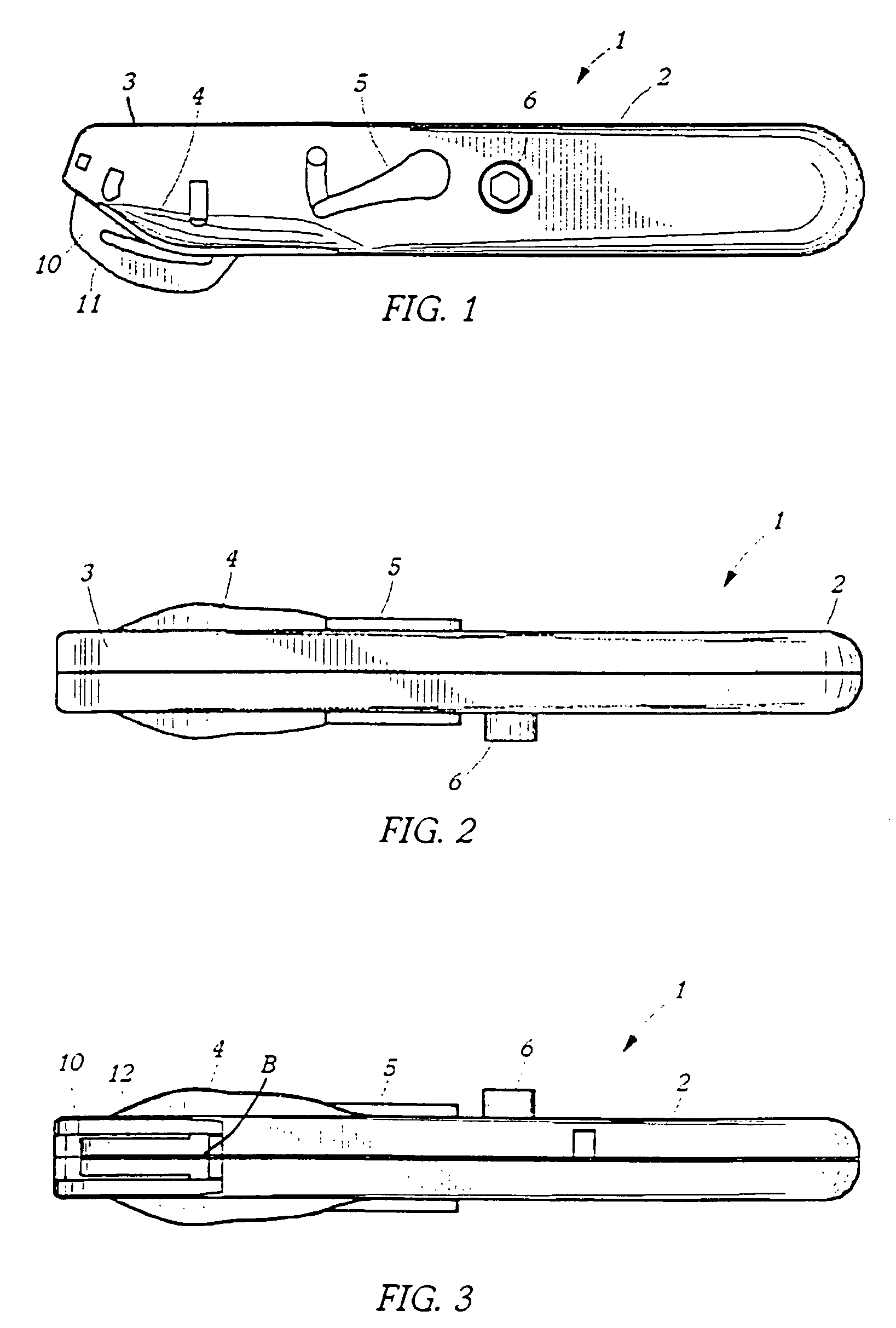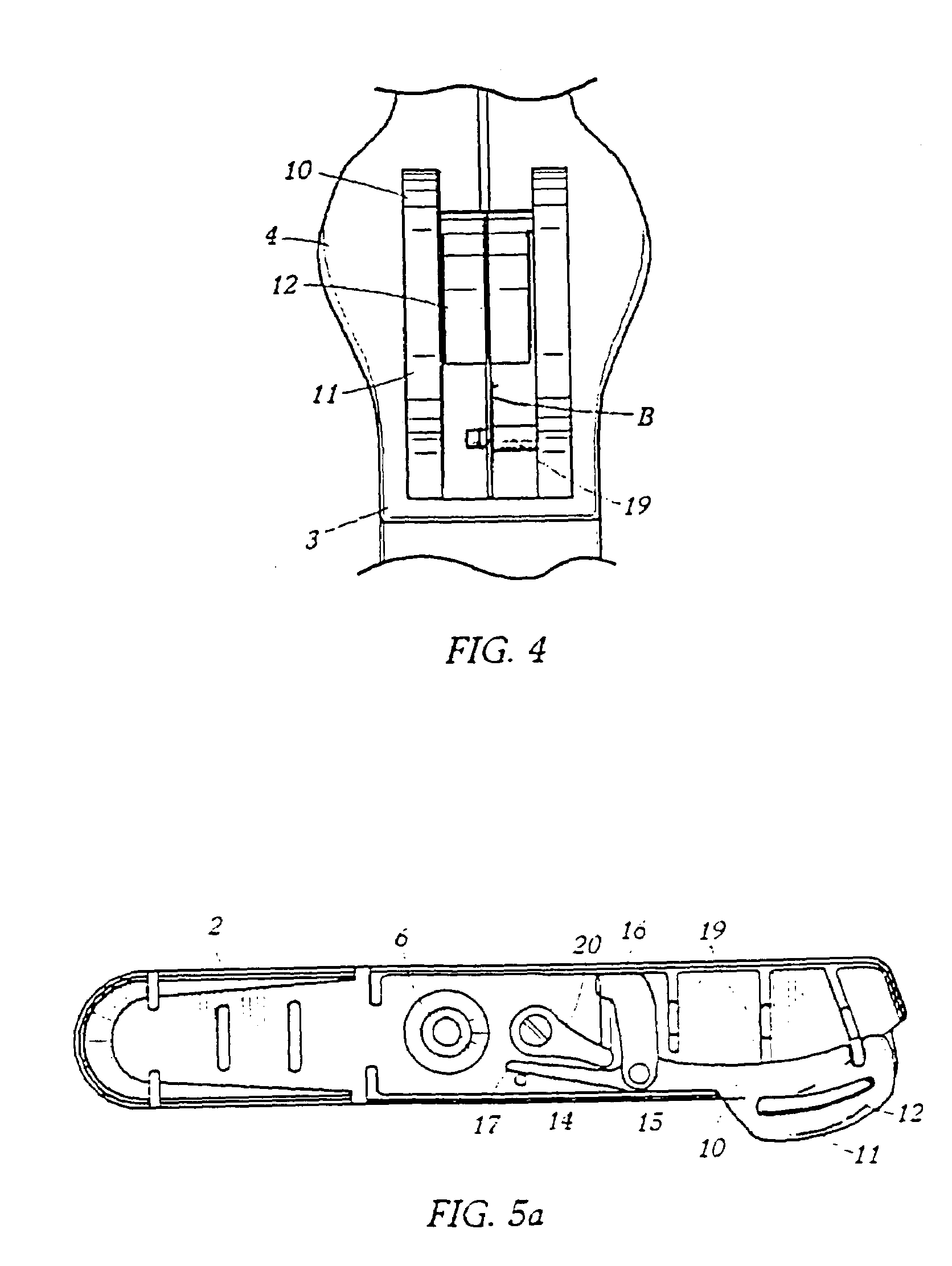Case knife with multiple position blade guards
- Summary
- Abstract
- Description
- Claims
- Application Information
AI Technical Summary
Benefits of technology
Problems solved by technology
Method used
Image
Examples
Embodiment Construction
[0027]The case knife 1 has a generally elongated, prismatic shape, typical of the conventional case knives used in the grocery or supermarket industry. There is a grip portion 2 towards one end and a blade-containing portion 3 at the opposite end. Along one lower edge of each side of the blade containing end or portion 3 protrude a pair of thumb rests 4, consisting of a pair of protruding flanges, generally symmetrically identical. These are integrally molded to protrude on each of the two shells halves making up the case knife shell. On each case knife shell half there is a generally elongated, thumb-operated button or lever 5, which pivots around its axle 14 and has at least two operative positions, as will be detailed.
[0028]A conventional knurled bolt 6 engages embedded nut 7 to hold the two shell halves together during use and to clamp and hold the blade B between the two shell halves. Each shell half includes protrusions 19 which also engage and hold the blade firmly and in the...
PUM
 Login to View More
Login to View More Abstract
Description
Claims
Application Information
 Login to View More
Login to View More - R&D
- Intellectual Property
- Life Sciences
- Materials
- Tech Scout
- Unparalleled Data Quality
- Higher Quality Content
- 60% Fewer Hallucinations
Browse by: Latest US Patents, China's latest patents, Technical Efficacy Thesaurus, Application Domain, Technology Topic, Popular Technical Reports.
© 2025 PatSnap. All rights reserved.Legal|Privacy policy|Modern Slavery Act Transparency Statement|Sitemap|About US| Contact US: help@patsnap.com



